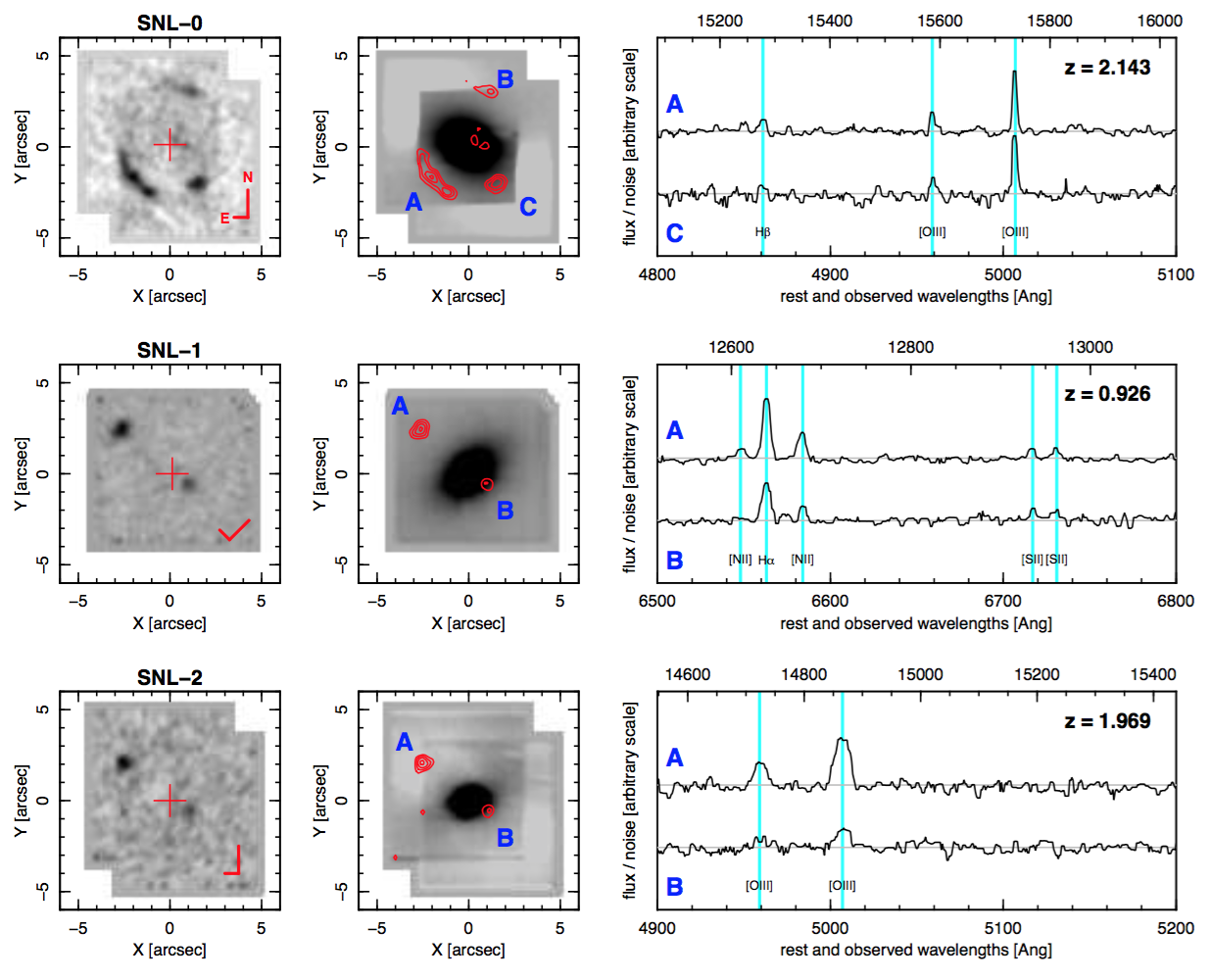The Stellar Initial Mass Function in Giant Elliptical Galaxies
The distribution of stellar masses created in a star-formation event (the Initial Mass Function or IMF) is a fundamental quantity in astrophysics. The IMF is the key output from theories of star formation, as well as a crucial input to models of galaxy formation and evolution, and essential for connecting extragalactic observations with simulations, by converting between luminosity and stellar mass. Since direct measurements of the IMF can only be made within the Milky Way (MW), and because no strong systematic variation is seen within the MW, modellers and observers usually extrapolate the same IMF to systems with very different formation histories, e.g. elliptical galaxies.
However several studies, using indirect observational techniques, have claimed evidence for a non-standard IMF in the cores of ellipticals. Detailed analysis of spectroscopic features suggests an excess of cool dwarf stars in these galaxies, as compared to the MW. Such a "bottom-heavy" IMF would imply a larger stellar mass-to-light ratio, M/L, by a factor of >2, compared to a MW IMF. Independently, masses estimated from distant strong-lensing ellipticals indicate unexpectedly-high M/L, and dynamical modelling of local early-types also suggests a heavier-than-MW IMF. However, the agreement between the various methods remains controversial, with no correlation seen for instance between spectroscopic and dynamical IMF estimates in nearby galaxies (MNRAS journal article). Confirmation of a non-universal IMF would have important ramifications for many areas in astrophysics (e.g. stellar mass and star-formation rate calibrations, star-formation theory, supernova rates, stellar remnant populations, chemical evolution, dark-matter constraints from galaxy clusters). It is therefore essential to subject claims of systematic variation to extensive tests and inter-comparisons, and to seek new and robust ways to determine the IMF in massive galaxies.
Recently we have developed a novel method to discover and exploit strong-lensing galaxies at low redshift, where IMF constraints can be inferred much more robustly, and can be rigorously compared to independent methods. Gravitational lensing provides precise and accurate measurements of total projected masses, but because most massive lens galaxies are quite distant (usually z > 0.2), the ~2-arcsec Einstein radius encloses substantial contributions from the dark matter (DM) halo as well as from stars. Since the halo mass and profile are uncertain, this leads to a strong degeneracy between DM content and the IMF. Using lenses at low redshift overcomes this obstacle, because although the Einstein radius is still ~2 arsec, this corresponds to a much smaller physical scale in nearby galaxies. Hence a pure lensing analysis, with no dynamical inputs, can measure the mass in the galaxy core, where the profile is dominated by stars, providing a much more robust constraint on the IMF (Typical DM corrections are ∼15% at z=0.04, cf. >40% at z>0.2).
 |
| Source and lens images, and extracted spectra, for the SNELLS lenses. For each source, the first panel shows a narrow-band, continuum-subtracted image extracted around the brightest line (H-α for SNL-1, [OIII] 5007A in SNL-0 and SNL-2). The lens galaxy centre is marked by the red cross; the compass shows the field orientation. The second panel shows the broad-band image as grey-scale, with contours indicating the narrow-band flux, and source images identified. The third panel shows spectra extracted from the source images, with the strongest emission lines indicated. SNL-0 is the previously-known lens ESO325--G004 (MNRAS journal article). |
Low-redshift lenses are hard to find because (a) massive galaxies are intrinsically rare, (b) the volume available at low redshift is small, and (c) lensing requires quite precise alignment with a background source. Most potential sources are faint and difficult to detect when projected against the bright foreground elliptical. Our response to this challenge is to use integral field unit (IFU) spectroscopy to search for multiply-imaged line-emission, concentrating the background flux both spatially and spectrally to increase contrast. The first implementation of this approach is our ongoing SINFONI Nearby Elliptical Lens Locator Survey (SNELLS, MNRAS journal article, ESO Messenger article), which has proved the concept and already discovered three lenses at z=0.03-0.05 (see figure). All three galaxies have high velocity dispersions and metallicity, propetries which have been linked to bottom-heavy IMFs. However, in all cases, we measure low lensing-derived M/L for these galaxies, compatible with a MW IMF.
The SNELLS results pose a direct challenge to claims for non-standard IMFs in elliptical galaxies, but the "sample" of three galaxies is clearly far too small to draw secure general conclusions. To drive a substantial advance in this field, we propose to build a statistically-powerful sample of ~30 low-z lenses sufficient to infer the mean IMF mass-excess factor with a precision not dominated by peculiarities of individual systems. An enlarged sample is essential to constrain the scatter among galaxies, and to identify any correlations with galaxy mass, metallicity, etc. To achieve this aim, we will adapt our search method by: (a) exploiting upcoming large multi-IFU survey datasets (SAMI, MaNGA, Hector) to search behind a much larger sample of lens candidate galaxies, and (b) conducting targetted searches with new and upgraded instrumentation (SINFONI/ERIS, MUSE+AO, JWST-NIRSPEC), reaching fainter background emission-line sources.
The ultimate goals of this programme are: (1) to establish definitively the trends and scatter in stellar M/L, and hence the IMF "mass normalisation", from a sample of clean, robust nearby lenses, (2) to use these systems to calibrate dynamical and spectroscopic IMF estimators so that they can be securely applied to larger samples of galaxies.
Staff involved with these projects at Durham include John Lucey and Russell Smith.
Contact Details
Centre for Extragalactic Astronomy,Ogden Centre for Fundament Physics - West,
Department of Physics,
Durham University,
South Road,
Durham DH1 3LE
Tel: 44 (0)191 3343635





